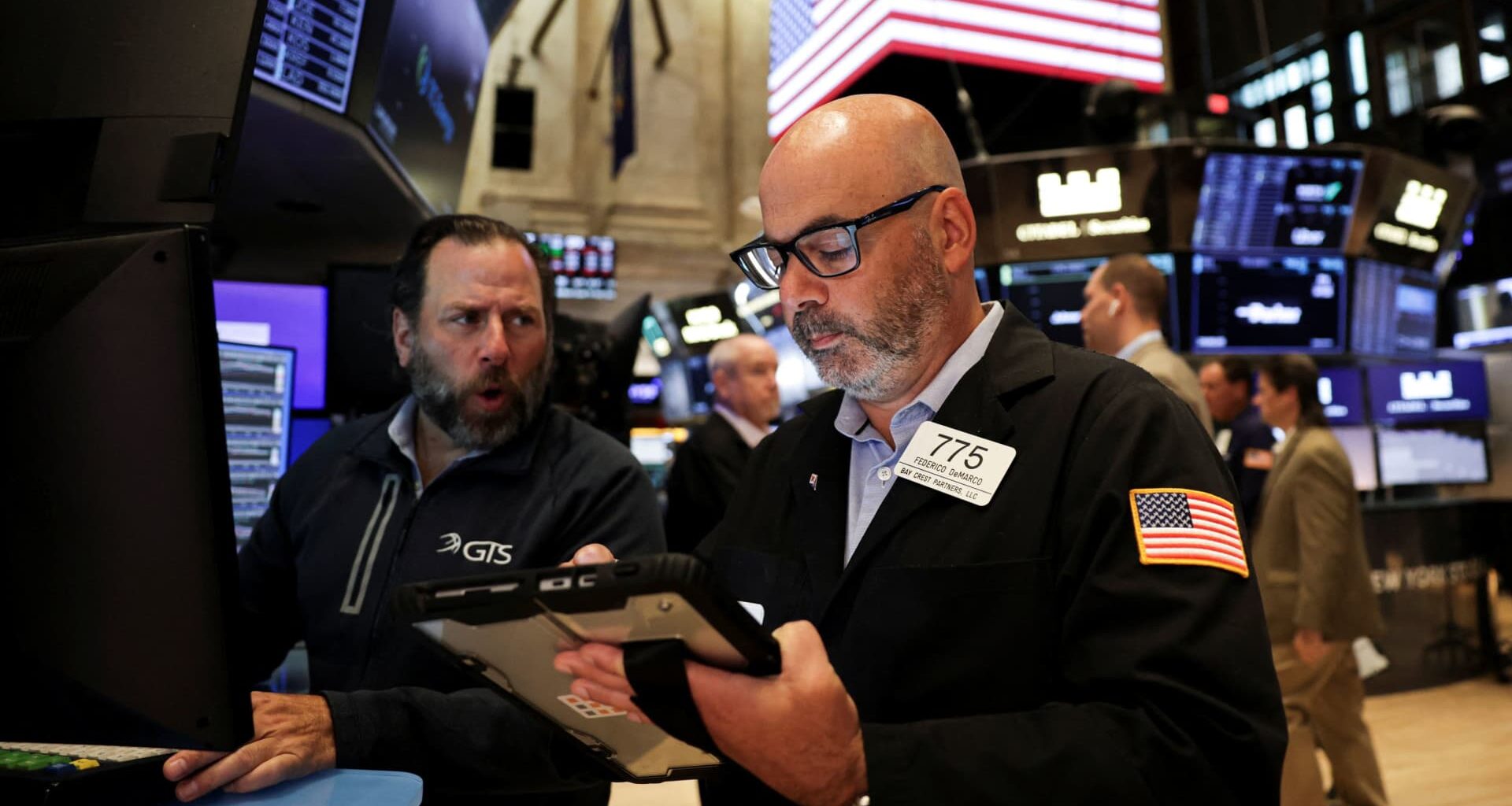A trader works on the floor at the New York Stock Exchange (NYSE) in New York City, U.S., Sept. 22, 2025.
Jeenah Moon | Reuters
The S&P 500 reached new heights on Tuesday as investors monitor the risks to the market’s rally to record levels.
The broad market index hovered around the flatline but had reached a new all-time intraday high earlier in the session, its fourth consecutive record. The Nasdaq Composite fell 0.3%, while the Dow Jones Industrial Average outperformed, rising 231 points, or 0.5%, and scoring a fresh all-time high during the trading day.
The Dow’s move was supported by a move higher in Boeing. The stock rose on the heels of President Donald Turmp praising Uzbekistan’s president, Shavkat Mirziyoyev, for signing a “GREAT Deal” with the aerospace company that was worth more than $8 billion. Shares were also bolstered by talks between the U.S. and China of a “huge” Boeing deal.
On top of the new record for the S&P 500 and Dow, the small-cap Russell 2000 likewise notched an all-time high Tuesday. That comes just days after the benchmark saw its first record close since November 2021.
“You’re getting just a broad participation as a result of the One Big Beautiful Bill Act, which kind of solidified people’s tax expectations, and then you did get the rate cut from the [Federal Reserve], so you’ve had this sort of break for smaller companies on writing off more interest and then lowering the cost of interest with the Fed’s cutting last week,” Tom Hainlin of U.S. Bank Asset Management told CNBC.
“That’s helping broaden things out from just large cap tech companies investing in [artificial intelligence],” the firm’s national investment strategist added.
The three major averages closed at all-time highs on Monday — marking three straight winning sessions for the S&P 500 — and recorded fresh intraday records that day. Gains accelerated in the latter half of the trading session after Nvidia shares jumped nearly 4% higher on the back of an announcement from the chipmaker that it will invest $100 billion in OpenAI for the buildout of data centers.
Hainlin still thinks AI could continue to power U.S. equities, even with risks tied to elevated market valuations.
“We’re still early in what AI can do and will do, and so we’re still in this investment period where companies are investing in the technology,” he said. “You’re going to have electricity demand, [and] you’re going to have data centers, so there’s a number of different industries that continue to benefit, and we still see a tailwind for those industries.”
Investors are awaiting Friday’s release of the latest reading of the personal consumption expenditures price index, which is the Fed’s preferred inflation measure. They’re also watching the increasing chance of a government shutdown ahead of a Sept. 30 deadline after the Senate last week rejected Republican and Democratic proposals to at least temporarily fund the government. On Tuesday, Trump canceled a planned meeting this week with top Democrats in Congress, saying that no meeting “could possibly be productive.”
The stock market has historically brushed off concerns tied to government shutdowns, but this time around could be different as the economic backdrop heading into a shutdown is the weakest in more than two decades.

